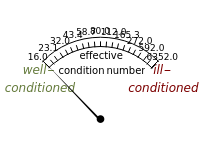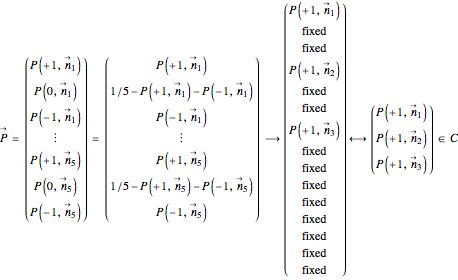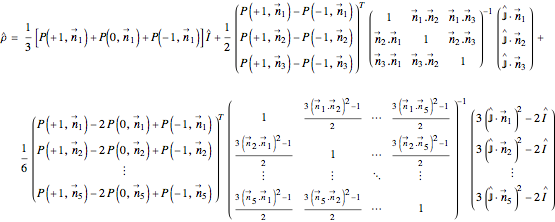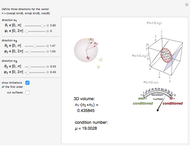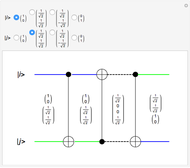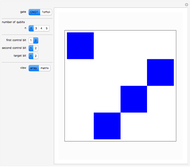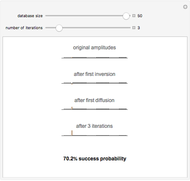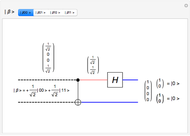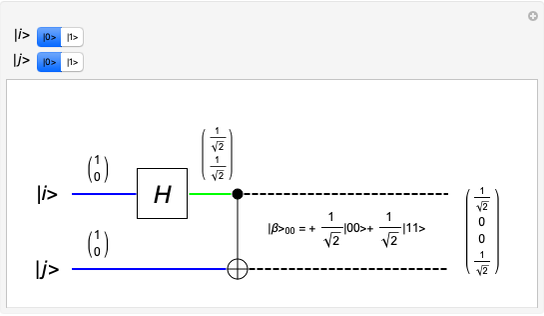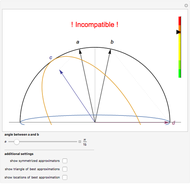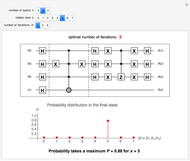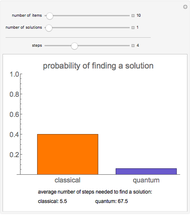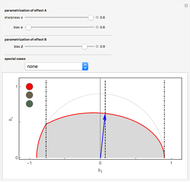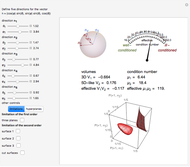Qutrit States as Probability Vectors

Requires a Wolfram Notebook System
Interact on desktop, mobile and cloud with the free Wolfram Player or other Wolfram Language products.
A particle with spin  can represent a qutrit. Any qutrit state can be associated with a 15-dimensional probability vector
can represent a qutrit. Any qutrit state can be associated with a 15-dimensional probability vector  whose components
whose components  have definite physical meaning. The discrete variable
have definite physical meaning. The discrete variable  is the spin projection and
is the spin projection and  defines a direction of spin projection measurement,
defines a direction of spin projection measurement,  . The ends of the vectors
. The ends of the vectors  lie on the unit sphere
lie on the unit sphere  , which is illustrated in the top-left corner. In general,
, which is illustrated in the top-left corner. In general,  is a probability distribution function of two discrete variables
is a probability distribution function of two discrete variables  and
and  , and
, and  determines a point on the 14-simplex. If the directions
determines a point on the 14-simplex. If the directions  are chosen with equal probability, then
are chosen with equal probability, then  for all
for all  . In that case, the vectors
. In that case, the vectors  can be labeled by 10 real non-negative numbers
can be labeled by 10 real non-negative numbers  ,
,  . To illustrate such a probability vector we fix seven components, namely
. To illustrate such a probability vector we fix seven components, namely  ,
,  , and
, and  ,
,  , that is, we determine a hyperplane that intersects the simplex, with the cut set depending on three real non-negative parameters
, that is, we determine a hyperplane that intersects the simplex, with the cut set depending on three real non-negative parameters  ,
,  , and
, and  . The cut set is nothing else but a cube
. The cut set is nothing else but a cube  ,
,  . In other words, any qutrit state is associated with the probability vector of the form
. In other words, any qutrit state is associated with the probability vector of the form
Contributed by: Sergey Filippov and Vladimir I. Man'ko (February 2010)
Based on a program by: S. M. Blinder
Open content licensed under CC BY-NC-SA
Snapshots
Details
Representation of spin states by finite dimensional probability vectors is considered in
S. Filippov and V. Man'ko, "Inverse Spin-s Portrait and Representation of Qudit States by Single Probability Vectors," arXiv, 2010.
Permanent Citation
